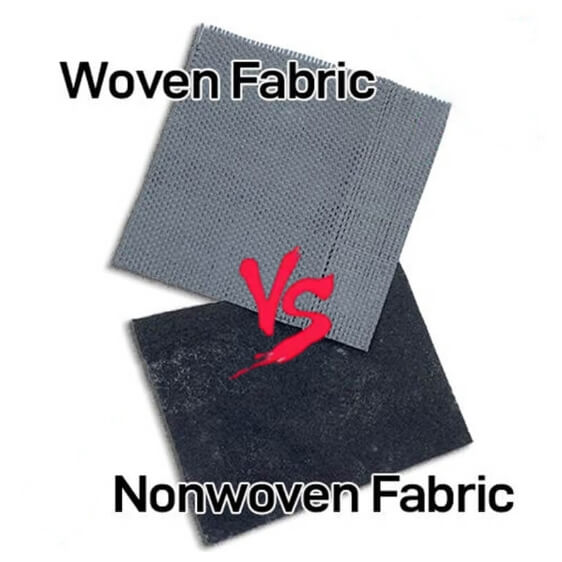When it comes to filtration, the choice of fabric can significantly impact performance. Two primary types of filter fabrics are woven and non-woven. While both serve the purpose of filtering particles from fluids or air, they have distinct characteristics and applications.This article we will discuss about difference between woven and non woven filter fabric.

Woven Filter Fabrics
Woven fabrics are created by interlacing yarns in a specific pattern. This process results in a fabric with a defined structure, often characterized by a grid-like appearance. The choice of yarn material (e.g., cotton, polyester, nylon) and the weaving technique (e.g., plain weave, twill weave) determine the fabric’s properties.
Advantages:
- Durability: Woven fabrics are generally more durable and can withstand repeated cleaning and reuse.
- Precise filtration: The defined structure allows for precise control over pore size and filtration efficiency.
- Wide range of applications: Woven fabrics are used in various industries, including textile manufacturing, air filtration, and liquid filtration.
Disadvantages:
- Cost: Woven fabrics can be more expensive to produce compared to non-woven fabrics.
- Limited flexibility: The structure of woven fabrics can limit their flexibility and adaptability to certain applications.
Non-Woven Filter Fabrics
Non-woven fabrics are produced by bonding fibers together without weaving or knitting. This process can be achieved through various methods, such as thermal bonding, chemical bonding, or melt-blown. Non-woven fabrics have a more random and less structured appearance compared to woven fabrics.
Advantages:
- Cost-effective: Non-woven fabrics are generally more cost-effective to produce due to their simpler manufacturing process.
- Flexibility: They can be made in various thicknesses, weights, and textures to suit different applications.
- High filtration efficiency: Non-woven fabrics can offer excellent filtration efficiency, especially for fine particles.
Disadvantages:
- Lower durability: Non-woven fabrics may be less durable than woven fabrics, especially when exposed to harsh conditions.
- Limited precision: The random structure of non-woven fabrics can make it more challenging to control pore size and filtration efficiency.
Choosing the Right Fabric
The selection of woven or non-woven filter fabric depends on several factors, including:
- Particle size: The size of the particles to be filtered determines the required pore size.
- Filtration efficiency: The desired level of filtration efficiency influences the fabric’s properties.
- Durability: The fabric’s durability is important for applications that involve repeated use or exposure to harsh conditions.
- Cost: The cost of the fabric must be considered within the overall budget.
- Application: The specific application dictates the appropriate fabric type and properties.
In conclusion, both woven and non-woven filter fabrics have their unique advantages and disadvantages. By understanding their characteristics and considering the specific requirements of the application, one can make an informed decision to select the most suitable fabric for filtration purposes.
